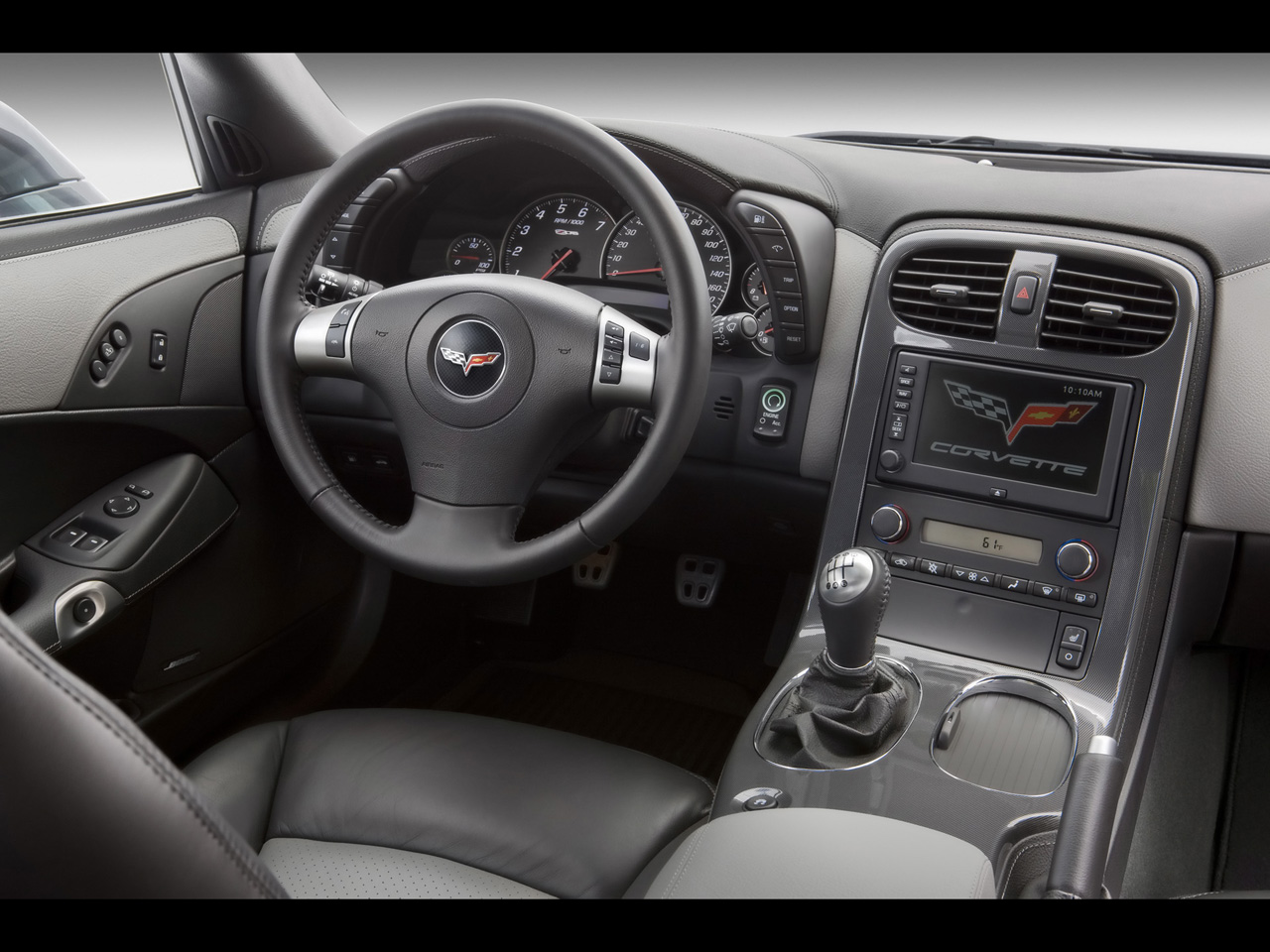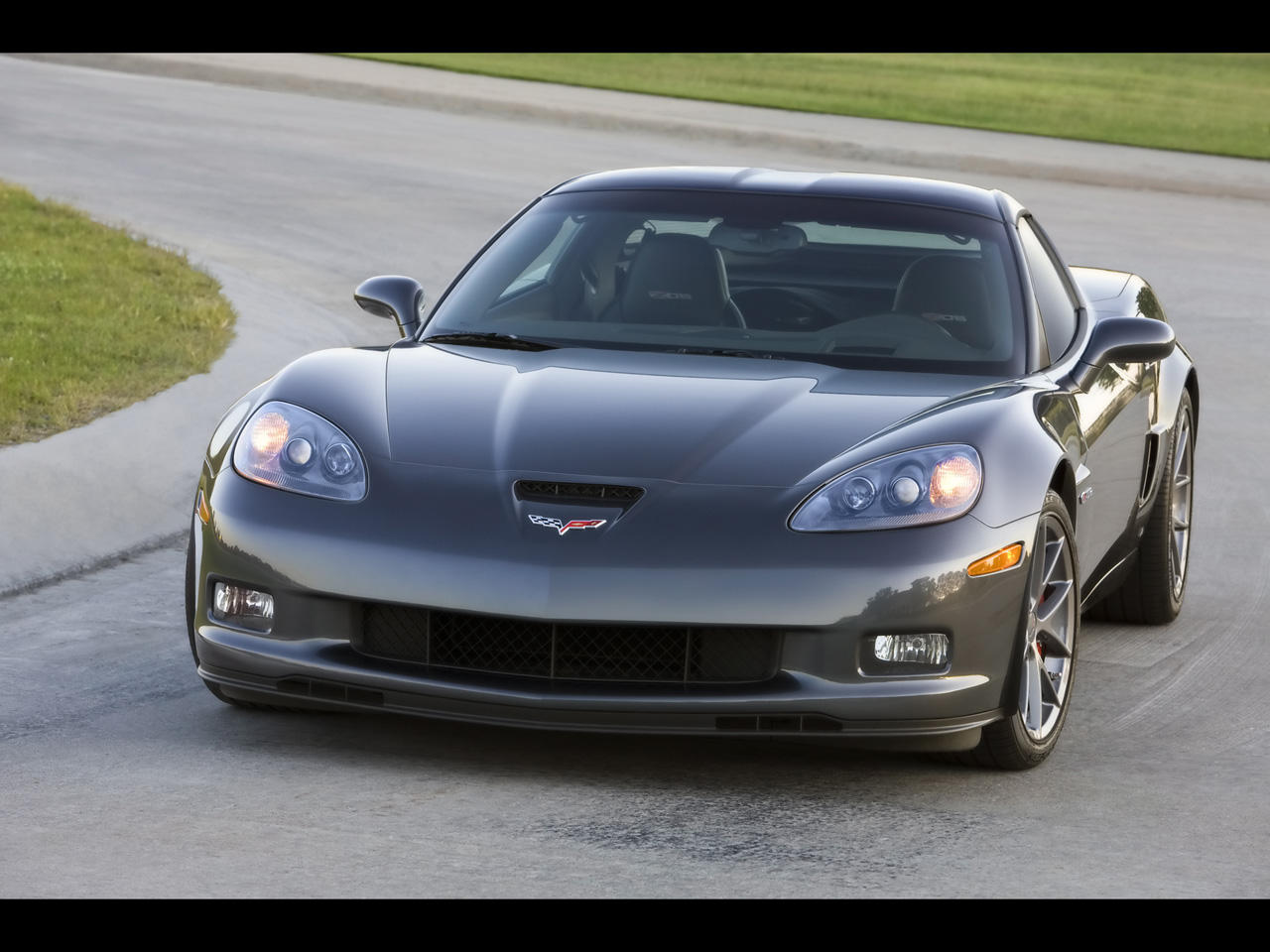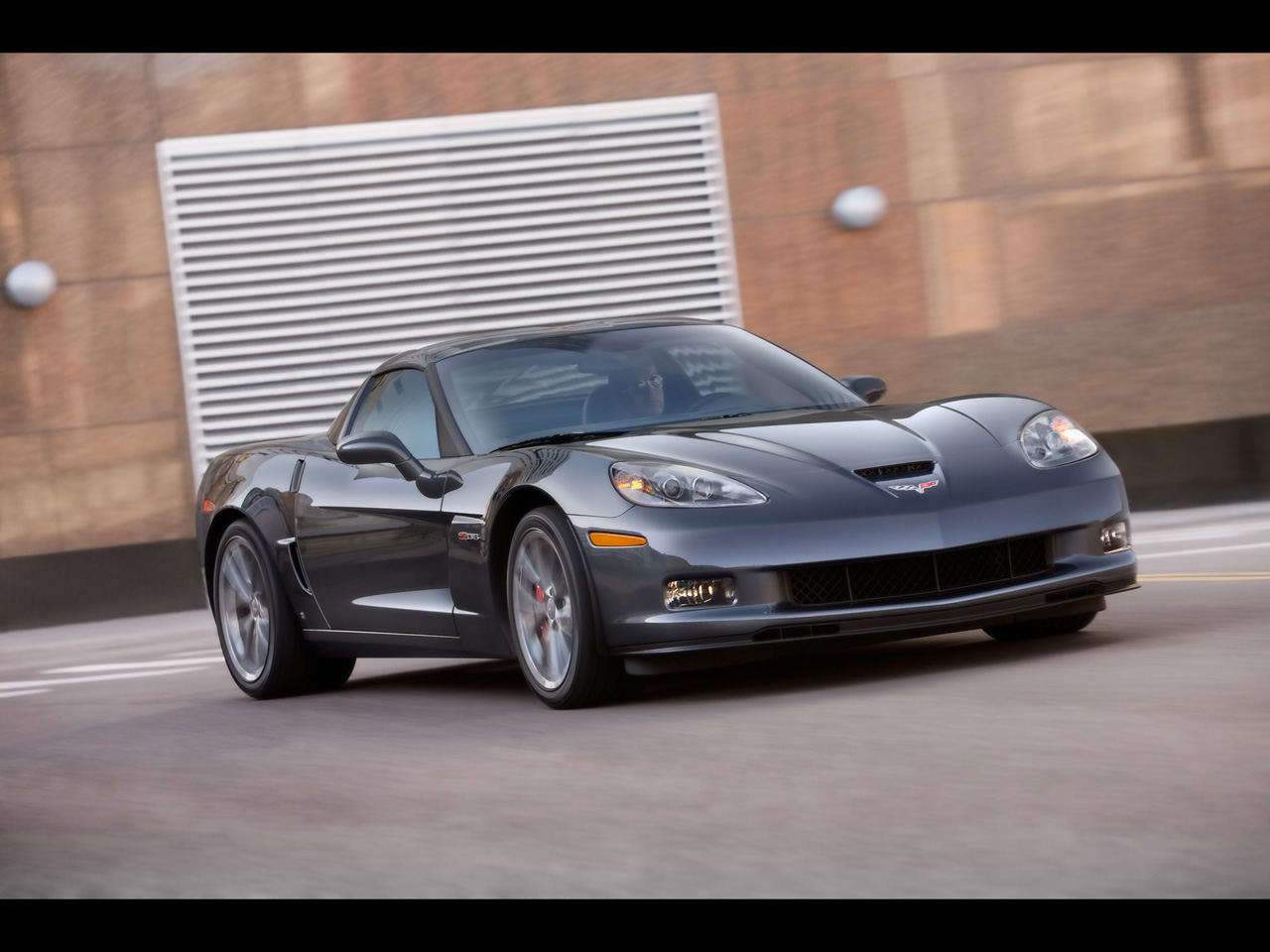2009 Chevrolet Corvette Z06
|
Price |
-- |
Production |
-- | ||
|
Engine |
7 liter V8 |
Weight |
3180 lbs | ||
|
Aspiration |
natural |
Torque |
-- | ||
|
HP |
505 hp @ 6300 rpm |
HP/Weight |
-- | ||
|
HP/Liter |
72.1 hp per liter |
1/4 mile |
-- | ||
|
0-62 mph |
3.7 seconds |
Top Speed |
199 mph |
(from General Motors
Press Release) RACE BRED CORVETTE Z06 FROM CHEVROLET
Equipped with a 377 kW LS7 V8 engine and built on a lightweight
chassis, the Corvette Z06 is a road going descendant of the
championship-winning Corvette racing programme that includes the Le
Mans 24-Hour race in its annual schedule. With its racing-inspired
powertrain and suspension features, the Corvette Z06 delivers
exceptional levels of capability and technology.
The aerodynamics of the Z06’s were shaped by the experiences of the
Corvette racing program, where high-speed stability and cornering
capability are paramount. And while the race-cars use large rear
wings, the Z06’s elevated spoiler provides sufficient downforce to
balance the road-worthy front splitter without adversely affecting
aerodynamic drag. The Z06’s Cd is 0.34.
For all its race-inspired functionality, the Z06 is designed to be a
high-performance vehicle suitable for daily use. To that end,
comfort and convenience features are of a very high standard.
High-Intensity Discharge lighting, fog lamps, leather seating,
dual-zone air conditioning, cabin air filtration and head-up display
(HUD), with track mode and g-meter, are standard.
LS7 engine
The Z06’s LS7 seven
litre engine delivers 377 kW in a vehicle that weighs just 1,442 kg
– a combination that delivers a 0-100 acceleration of 3.7 seconds in
first gear and a top speed of 320 km/h recorded on the Autobahn in
Germany. It also provides maximum lateral acceleration of 1.04 g and
100-0 km/h braking in just 34 metres; a level of performance that
allowed the Corvette Z06 to lap the famed Nürburgring circuit in a
time of 7:43 from a standing start in testing.
The LS7 engine shares the same basic Gen IV V-8 architecture as the
Chevrolet 6.2-liter LS3 engine, but it uses a different cylinder
block casting with pressed-in steel cylinder liners to accommodate
the engine’s larger diameter 104.8 mm cylinder bores.
Internally, the LS7’s reciprocating components are based on
racing-derived lightweight technology, including titanium connecting
rods and intake valves, to help boost power and rpm capability. The
rev-limit, imposed by a fuel cut-off, is 7,100 r/min.
One of the clearest examples of the LS7’s race-bred technology is
its use of titanium connecting rods. These weigh just 464 grams
apiece and besides being lightweight, which enhances high-rpm
performance, the titanium material makes the rods extremely durable.
The LS7’s CNC-ported aluminium cylinder heads are designed to meet
the high airflow demands of the engine’s 7.0-liter displacement. To
ensure optimal, uninterrupted airflow, the LS7’s heads have
straight, tunnel-like intake ports. Very large by production-vehicle
standards – even racing standards – they are designed to maintain
fast airflow velocity, providing excellent torque at low rpm and
exhilarating horsepower at high rpm.
The LS7 has a dry-sump system designed to keep the engine fully
lubricated during the high cornering loads the Corvette Z06 is
capable of producing. The pressurised oil feed keeps the oil pick-up
continually immersed in oil at cornering loads exceeding 1 g.
Oil circulates through the engine and down to the sump pan, where it
is sent back to the reservoir via a scavenge pump. The
large-capacity (9,9 litre) reservoir, combined with a high
efficiency air-to-oil cooler, provides necessary engine oil cooling
under the demands of the engine’s high power output.
Drivetrain
A high-capacity clutch channels the vast torque of the LS7 engine to the rear mounted six-speed manual transaxle. The transmission includes a pump that sends transmission fluid to a front mounted oil radiator for cooling. On its return the fluid passes through a heat exchanger to remove heat from the differential lubrication system. The six-speed transaxle includes a limited-slip differential.
Structure
The Z06 has a unique
aluminium body structure for optimum stiffness and light weight.
Perimeter chassis members are one-piece hydroformed aluminium
components featuring cast suspension nodes, which replace many
welded steel components on other Corvette models.
Advanced structural composites featuring carbon-fibre are bonded to
the aluminium structure. The wide front wheel-wells, for example,
are made from carbon composite and the passenger compartment floor
combines carbon-fibre skins that sandwich an ultra-lightweight balsa
wood core.
The Z06 has a magnesium cradle that serves as the attachment point
for the engine and front suspension components. Lighter than
aluminium yet incredibly strong, the magnesium cradle helps improve
the front-to-rear weight distribution, as do carbon-fibre front
fenders. Engineers also moved the battery from under the bonnet to a
position in the rear of the car to optimise the weight distribution.
Suspension and brakes
The Z06 retains the
standard Corvette wheelbase of 2686-mm. The race bred suspension
works harmoniously with 18 x 9.5-inch cast-spun aluminium wheels and
275/35ZR18 tyres at the front, and 19 x 12-inch cast-spun aluminium
wheels with 325/30ZR19 tyres at the rear. The tyres use the latest
extended-mobility technology from Goodyear to provide a satisfactory
ride but still allow the vehicle to achieve lateral acceleration of
more than 1 g. The extended-mobility tyres eliminate the need for a
spare tyre while also reducing the chance of a sudden loss of
handling capability in the event that a tyre loses air pressure.
Brakes are 355 mm diameter vented and cross-drilled discs at the
front and 340mm vented and cross-drilled discs at the rear.
Large, red-painted, six-piston callipers with six individual brake
pads are fitted at the front. Individual brake pads are used because
they deliver more equalized wear compared to what would otherwise be
a pair of very long single-piece pads. For the rear brakes,
four-piston callipers with four individual brake pads are used. A
four-channel ABS system is standard, as is a very competent active
handling system – complete with a Competitive Driving mode.



